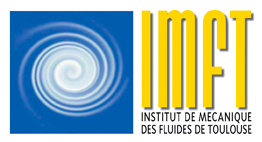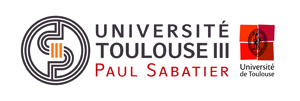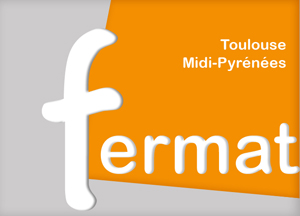DEM-CFD simulation of dilute and dense particle laden flows : application to a lab-scale pressurized dense fluidized bed
Soutenance de thèse Ainur Nigmetova
Mercredi 20 novembre à 14 h 00 – Amphithéâtre Nougaro
Résumé :
In this work, three-dimensional 3D numerical study of the particle-laden flow is performed using an Euler-Lagrange approach at the mesoscopic scale. In the frame of this approach, the trajectory of the particles are tracked individually and collisions with their neighbours are treated, while the fluid phase is described in a locally averaged way. A mesoscopic investigation allows to analyse the effect of many complex phenomena occurring in a gas-particles flow as i) fluid-particle drag force and particle-particle collision, ii) particle-wall collisions, accounting for dynamic friction, and iii) multiple particle-particle contacts for collisions occurring in dense regime. Moreover, it permits to realise a multi-scale analysis in order to assess the assumptions from the mesoscopic scale on the macroscopic scale of particle-particle and particle-wall collisions.
In this context, the goal of our work is twofold : i) to contribute to the development and validation of the new numerical tool based on the Euler-Lagrange approach, and ii) to perform a multi-scale analysis based on the meso-scale simulations in order to extract information to be used at the macroscopic scale. In order to accomplish these tasks, particle-laden flows in both dilute and dense regimes are studied.
First, the numerical simulations of a fixed array of particles are performed in order to evaluate the balance equation of the momentum of gas motion in flow regimes, where the momentum exchange between phases (gas-solid) plays a major role. Second, to evaluate the accuracy of the used collisional model for rapid particulate flows the simulations of coarse particles transported by a fully developed turbulent gas vertical channel flow were examined and were compared with existing Lagrangian simulation results in the frame of hard-sphere collision modelling approach. Third, a virtual rough surface modelling is proposed, and its agreement with 2D and 3D stochastic modellings is verified. And finally, the hydrodynamics of a real gas-solid ressurized fluidized bed with about 10 million particles was investigated, with a focus on the near-wall region behaviour of the particulate mixture in order to provide information for modelling boundary conditions at the macroscopic scale.
Composition du jury :
- Raffaella Ocone Rapporteure
- Simon Shneiderbauer Rapporteur
- Mikhael Gorokhovski Président du Jury
- Pascal Fede Examinateur
- Edouard Izard Examinateur
- Vincent Moureau Examinateur
- Olivier Simonin Directeur de thèse
- Enrica Masi Co-directrice de thèse
Institution : Toulouse INP





